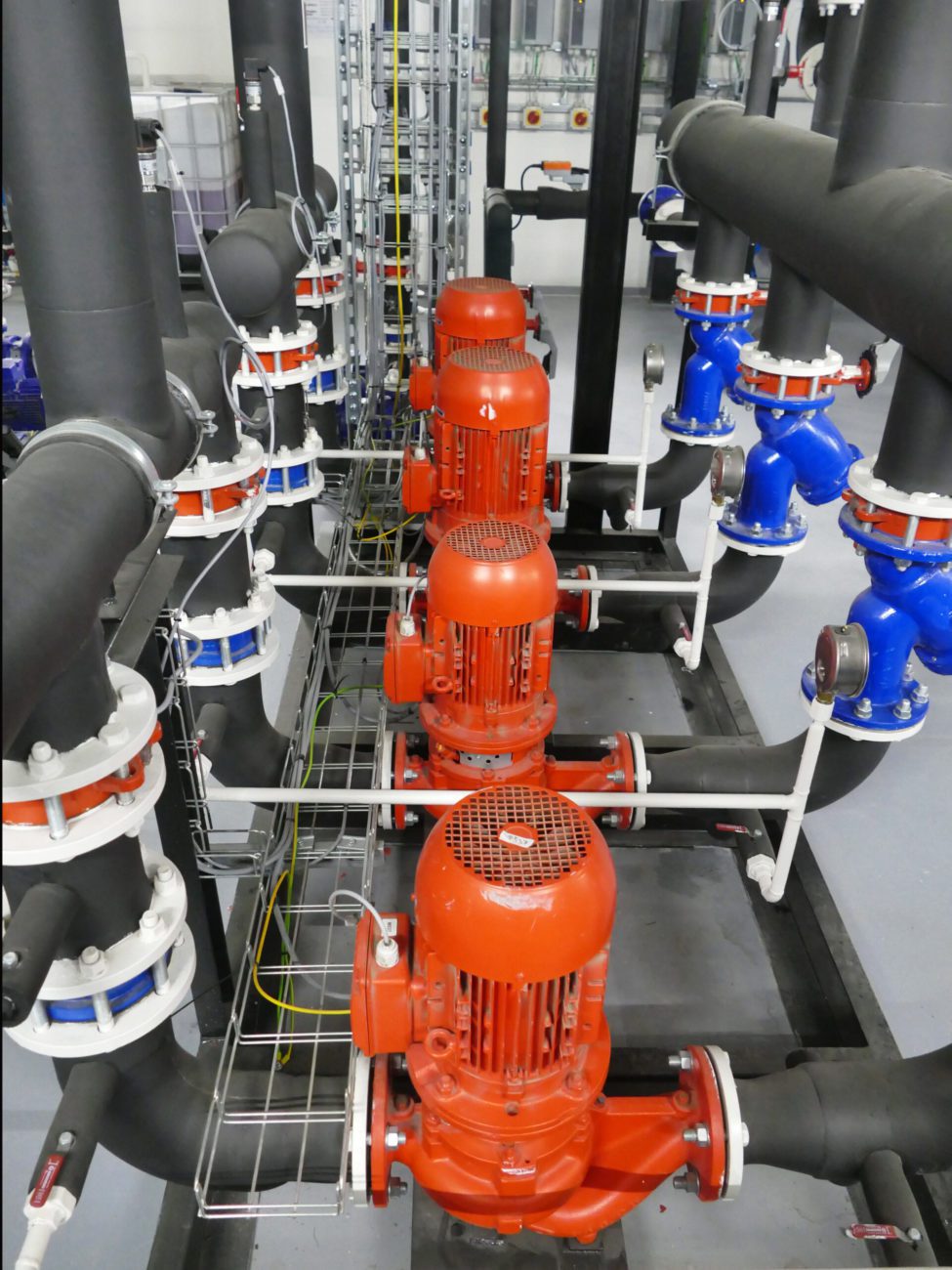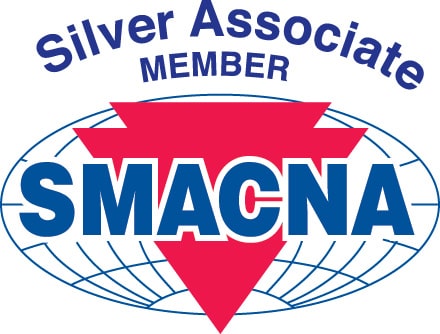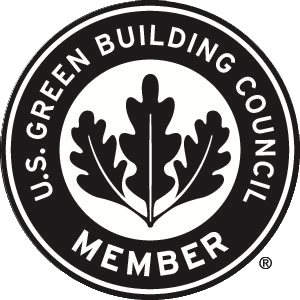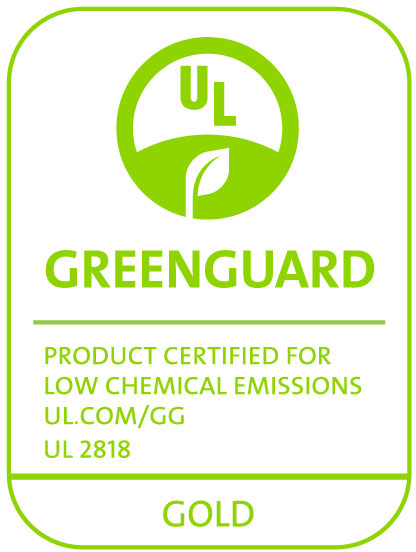
When evaluating the best refrigeration pipe insulation for your project, there are many things to consider. Such factors include…
- Line (operating) temperature
- Upper ambient temperature range
- Upper relative humidity range
- Thermal conductivity and permeability
- Application – interior, exterior, subject to foot traffic and mechanical damage
- Space restrictions (between pipes, other objects, retail grocery cases)
- Material cost
- Product life cycle
- LEED® credit compliance
- Fire safety compliance with either ASTM E 84 or UL 723 25/50 flame spread/smoke developed-index
Commercial and industrial refrigeration systems typically operate in the 20°F to -50°F (ammonia) range. These continuous service temperatures are below ambient and under constant threat of condensation and vapor drive. Additionally, hot gas defrost cycles can reach intermittent spikes of 250°F. The consequences of inadequate HVAC refrigeration pipe insulation design include saturated insulation, icing, pipe corrosion, system failure, and dreaded downtime.
The ASHRAE Handbook recommends cellular glass, closed-cell elastomeric, closed-cell phenolic, polystyrene, and polyisocyanurate insulation for refrigeration system applications. These refrigeration pipe insulation types share a few characteristics: closed-cell structure, low water absorption, and low water vapor transmission (WVT).
Unlike open-cell insulation types, closed-cell refrigeration pipe insulation does not “wick” moisture into the insulation body when subjected to surface damage. Moisture-laden insulation will reduce thermal efficiency, promote mold growth and facilitate corrosion under insulation. Additionally, some closed-cell types offer built-in vapor retarders so the cost of material and labor to install a supplemental jacket are not necessary. Finally, some are flexible and do not require a separate fabrication step which reduces time and material loss through the supply chain.
When evaluating the best refrigeration pipe insulation (closed-cell), important factors to consider include:
- Thermal conductivity (determines insulation thickness)
- Water vapor permeability (supplemental vapor retarder or jacket)
- Flame/smoke rating (25/50)
- Is the refrigeration pipe insulation rated for the continuous upper and lower service temperatures of the HVAC equipment manufacturer?
- UV resistance for exterior applications
- Durability when subjected to mechanical impacts
- Are continuous tubes offered to insulate multiple very long variable refrigerant flow (VRF) or variable refrigerant volume (VRV) lines?
- Are factory-fabricated fitting covers offered?
- Can the product be easily field-fabricated for a high-quality installation?
- Does the manufacturer offer a single-source system solution for warranty purposes?
Closed-cell elastomeric refrigeration pipe insulation is commonly specified and installed due to its favorable performance benefits:
- Closed-cell structure
- Lightweight
- Flexible
- Built-in vapor retarder
- No jacket required for most applications
- Favorable thermal k (reduces required thickness)
- Low WVT, low water absorption
- Available in factory pre-cut tubes, continuous tubes, sheets & rolls, and accessories
- Passes ASTM E84 (25/50) through 2” thick
- Low-VOC for chemical emissions
While the most common closed-cell elastomeric refrigeration pipe insulation available is composed of nitrile butadiene rubber and PVC (NBR/PVC), Aeroflex USA offers an Ethylene Propylene Diene Monomer (EPDM) alternative. The benefits of the Aeroflex® brand of EPDM best refrigeration pipe insulation include:
- NonPolar (Hydrophobic) – does not induce or react with water vapor
- Higher upper continuous service temperature of 257°F
- Greater resistance to UV degradation
- Inherently microbial-resistant (no biocides added)
- Non-corrosive on austenitic stainless steel piping
- Environmental Product Declarations (EPD’s)
- Health Product Declarations (HPD’s)
- Indoor Advantage Gold[TM] Certified for low chemical emissions
- Available in standard unslit and “pre-cut” tubes (SSPT), continuous tubes, sheets and rolls (with or without PSA back), and factory-fabricated fittings up to 2” thick
- Aeroflex EPDM system accessories – pipe hanger fittings, factory-fabricated fittings, adhesives, tapes, and coatings
- Glue-less seam seals – Aeroflex® Cel-Link II®
- SSPT ID range from ⅜” to 16” IPS
- Passes ASTM E84 up to 2” thick
- Complies with NFPA 90A / 90B
- Made in the U.S.A. with global materials
- Buy-American compliant
To learn more about why Aeroflex is a strong contender as one of the best refrigeration pipe insulation solutions, please visit Refrigeration Pipe Insulation.
Source: National Insulation Association
https://insulation.org/io/











